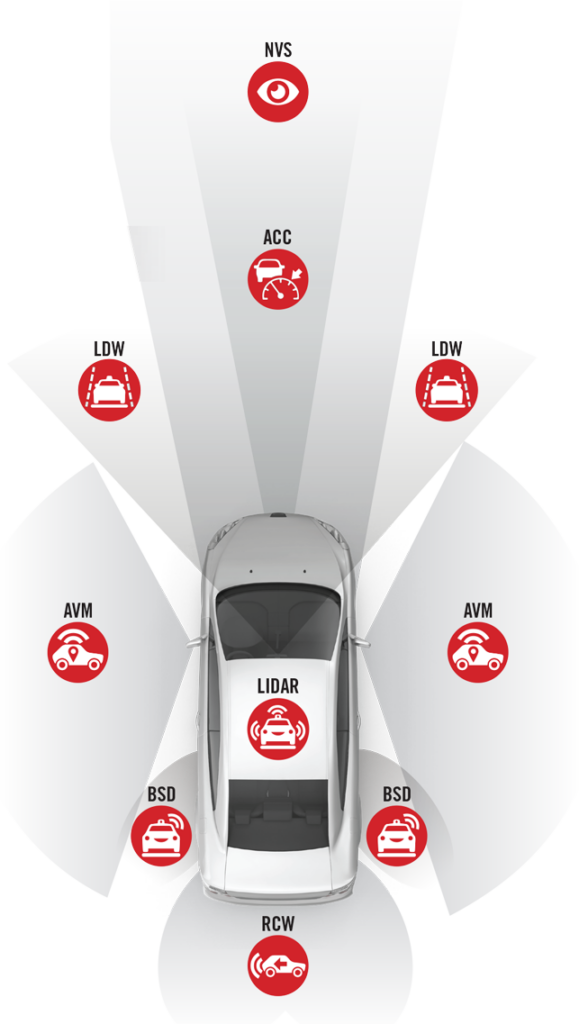Why Calibration?
Every year, more and more new cars are equipped with Advanced Driver Assistance Systems (ADAS). Your car may even have some of these:
- Adaptive cruise control
- Forward collision warning
- Automatic emergency braking
- Lane departure warning
- Blind spot monitoring
- Rear cross traffic alert
- Parking assist/self-parking
- Automatic headlight high-beam activation and dimming
In order to work properly, ADAS rely on various sensors that allow the systems to “see” what is happening around the vehicle. Cameras, radar and ultrasonic sensors are most common. Often times, steering sensors are also used to help determine the direction of vehicle travel. Many systems use information from a single type of sensor, but others combine information from multiple sensors into a process called sensor fusion in order to obtain a more accurate “view” of the world around it.
Failure to calibrate a sensor when necessary can result in faulty information that will cause ADAS to operate improperly or not at all. Faulty sensor input can cause:
Give yourself peace of mind in knowing that your vehicle's computer system is doing it's job to keep you and your family safe!



